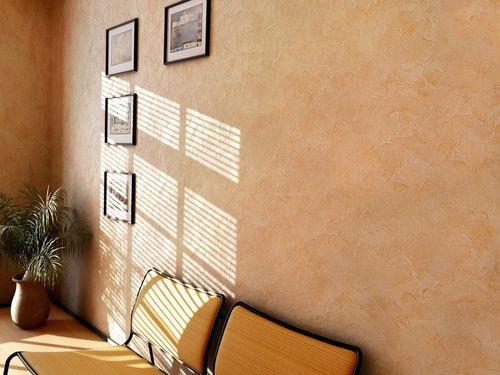In the process of repair and facing work should be exactly sure as the used building material and in the correctness of all actions. In addition, the perfectly selected tool is played by a major role. If you decide to use decorative plaster, then applying it to the roller as nothing easier to make it easier.
Content
Decorative Stucco: Features
Advantages of decorative textured plaster
- There is no smell.
- Excellent hides the surface defects.
- Does not require careful preparation of the basis.
- Creates good heat and noise insulation.
- Does not contain preservatives and solvents.
- It contains special components that prevent the formation of mold and fungi.
- Creates a favorable microclimate in the room, due to the porous structure.
- Excellent misses wet air.
The composition of decorative plasters
- Water and other liquid can be used as a solvent.
- Polyurethane and synthetic resins are used as a binder, and in water-based solutions - polyvinyl acetate, butadiene-styrene and acrylic dispersions.
- In the form of additives use: thickener, hydrophobic composition, antimpretaker, preservative, antiseptic.
- As a filler, a quartz, marble, granite crumb of various granulation is used.
Classification of decorative plaster
1. On the basis of:
- non-aqueous basis;
- water based.
2. In terms of application:
- universal;
- for internal works;
- for external work.
In addition, decorative structural plaster can be divided into the formation of the pattern, according to the application method and by filler.
Selection of decorative plaster: Basic rules
- Dry decorative stucco can change the shade depending on the party.
- The speed of setting the plaster depends on the type of surface treated.
- Decorative structural plaster with large filler is applied manually.
- Decorative plaster requires attention when working with color. So any shade on the relief looks more saturated than on a smooth surface. That is why paint is recommended to choose the tone lighter.
- The finished structural plaster should not be brewed with water, the exception is material based on it.
- Finished decorative plaster has a more accurate color gamut.
Rolls for decorative plaster
Roller is a tool consisting of a special coating, handles and cylinder. The latter may have a metal, rubber and plastic base. As for the coating, it is created from the fabric, a special pile and foam rubber.
Before buying a roller for decorative plaster, you should decide on the depth of the irregularities of the base. You need to apply building materials on a pre-prepared wall. At the same time, experts are not recommended unnecessary to put into the instrument, and move easily with sliding strokes.
After the surface serves, individual elements can be coated with acrylic paint.
The application of structural plaster roller will not take much time, especially if the wall is durable and does not require additional processing.
Application of decorative roller plaster
Preparation of the surface
- We clean the surface from dust and dirt, we are convinced of the absence of cracking, wet and fatty spots.
- Ground walls (if they have numerous old spots, then we do it 2 times).
Preparation of solution
- We prepare the composition in the right proportions, according to the instructions on the package.
- With the help of a drill thoroughly mix.
- If necessary, add a kel and interfere with at least 1 minute.
- Pour the solution into clean container and mix again.
Applying decorative plaster
- Smooth moving movements distribute plaster with roller throughout the wall area with small deposits from the floor, adjacent walls and ceiling.
- In order for the solution to do not hit other surfaces, stir up construction scotch strips at the joints.
Recommendations:
- For better clutch of the surface of the roller with a solution of decorative plaster, moisten it with water.
- The variety of structures is achieved due to the different speed of moving the roller and the strength of its press.
- Consider the fact that the mixture is quite sensitive to the air temperature. If it is above 25 ° and, or below 5 °, this can lead to uneven frozen composition.
- When applying plaster, choose the direction from top to bottom to one at the reception.
- In textured plasterers, the relief is formed by itself. When using structural plasters, it is formed due to special operations.
- To obtain the effect of the "orange crust", swap rollers first transverse lines, and then longitudinal using one direction.
- To create the effect of "fur coats", use alternately longitudinal and transverse movements in one direction.
- To simulate a pattern from Kos, use the foam roller.
What errors may occur
1. Plaster cracked.
Probably the reason in a too thick layer of plaster. It is enough to squeeze the cracks and close them with the same solution.
2. It does not turn out.
The reason is a poorly prepared surface. In this case, remove the applied decorative layer, align the wall and re-boot it. Next, cover the surface with the new plaster.
3. The plaster crepts.
Probably, the work was made in hot weather or the primer was not used.
In this case, remove the layer of plasters, ledging the base and re-apply the material.
Application of decorative plaster roller video:


























